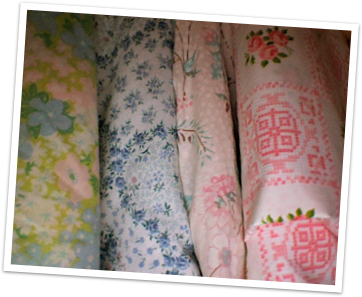
Thrift stores and Halloween go together. Like the Blair Witch and shaky camera angles. Like Scooby-Doo and musical chase scenes. Like Bruce Campbell and sarcasm.
Thrift stores are where you go for that shirt so campy, you just have to build a costume around it. Thrift shops spawn gypies, hobos, and disco-dancers. They're the places where bridesmaid dresses are fit for a queen. And a Western shirt can make you The Duke.
And if you're short on time or creativity? Stores like the Goodwill or Salvation Army often have ready-made costumes available, donated from stores like Target, or smartly gathered together by staff throughout the year. Adults... children... pets.... hey, there's something for everyone here.
 Speaking of pets, meet Paddington, a friend's cat, as she silently... DEEPLY... resents her thrift store chapeau. ("If I WERE a witch, I'd turn you all into mice and EAT you!... Stop laughing, it's not funny. NOT. FUNNY.... Oh, get a hobby!") The schadenfreude we experienced over this alone was worth the 59-cents for the costume.
Speaking of pets, meet Paddington, a friend's cat, as she silently... DEEPLY... resents her thrift store chapeau. ("If I WERE a witch, I'd turn you all into mice and EAT you!... Stop laughing, it's not funny. NOT. FUNNY.... Oh, get a hobby!") The schadenfreude we experienced over this alone was worth the 59-cents for the costume.But say you're not into humiliating your pets. Say you're more of a Halloween decor person. Well, a savvy thrift tore shopper can still find what they need to celebrate the season, either ready-to-go or by letting the imagination run free.
I'd estimate a good 50% of the items I used for my Harry Potter party came as thrift store finds, including these candlesticks and potions bottles.

 The potions bottles were just plain old jars, bottles and decanters in their previous life. I made the labels for them in Microsoft Word and adhered them with a glue-stick. Alone, they're ho-hum, but together and filled with questionable potions (the Polyjuice Potion is Nickelodeon Gak), they really do the trick.
The potions bottles were just plain old jars, bottles and decanters in their previous life. I made the labels for them in Microsoft Word and adhered them with a glue-stick. Alone, they're ho-hum, but together and filled with questionable potions (the Polyjuice Potion is Nickelodeon Gak), they really do the trick.So to speak.
By the way, craft stores are another great source of inexpensive Halloween decor. The photo at the top of the page, and here below, shows my dining table decorated almost exclusively in craft store and thrift store items. The faux pumpkin, chargers, mirror and assorted creatures all came from craft shops (heavily discounted and well before the holiday! LOVE it!). The table cloth isn't a table cloth at all-- it's purple velvet curtains I bought at the St. Vincent de Paul thrift store.
 So if you'd like to get into the spirit of Halloween, but you're spooked by the prices in traditional stores, thrift stores and craft shops can offer some very devilish solutions!
So if you'd like to get into the spirit of Halloween, but you're spooked by the prices in traditional stores, thrift stores and craft shops can offer some very devilish solutions!






















